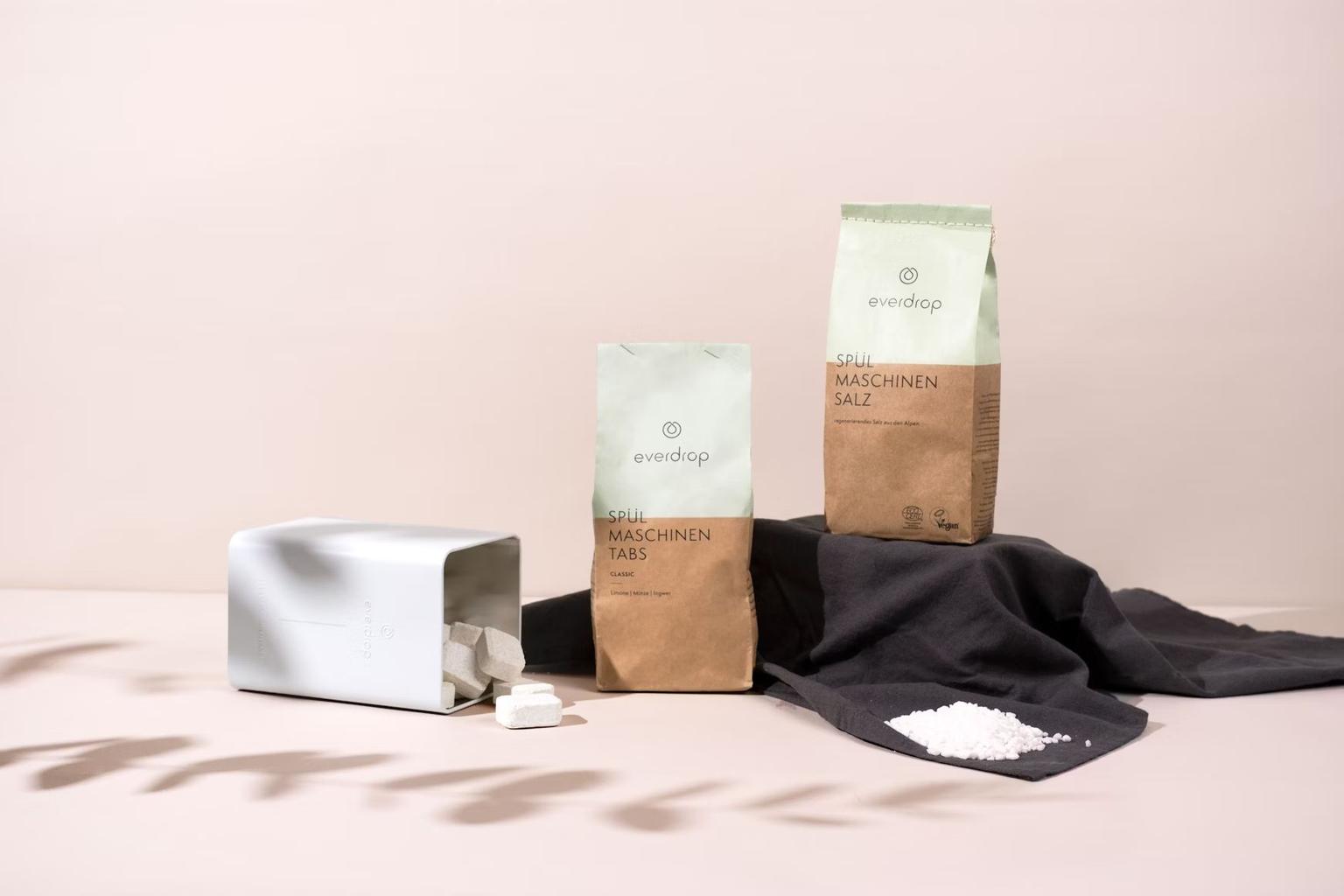Understanding the EU Product Environmental Footprint (PEF): A Guide for Businesses
The EU Environmental Footprint (PEF) is becoming increasingly important for your business. Why? It...
By: Johannes Fiegenbaum on 5/26/25 10:19 AM

Quick Answer: LCA or PCF?
When to use which?
Quick Comparison:
| Criterion | LCA | PCF |
|---|---|---|
| Scope | Multiple environmental factors | CO₂ emissions only |
| Time required | High | Low |
| Data requirements | Extensive | Focus on CO₂ data |
| Use case | Long-term strategies, regulatory requirements | CO₂ labeling, climate reporting |
Tip: Combine both methods to maximize benefits. According to a McKinsey report, companies integrating both LCA and PCF approaches often achieve more robust sustainability outcomes and are better prepared for evolving regulations.
LCA (Life Cycle Assessment) considers a wide range of environmental impacts, while the PCF (Product Carbon Footprint) focuses exclusively on greenhouse gas emissions. While LCA analyzes aspects such as energy consumption, water and resource use, and various emissions, PCF centers on CO₂ equivalents. For instance, a study published in Nature Food found that rice production uses 50 times more water and three times more land than pasta, highlighting how LCA can reveal hidden impacts beyond carbon emissions. This broader focus also affects the data required and the processes involved.
An LCA requires more detailed data collection and analysis than a PCF. The key differences can be summarized as follows:
| Aspect | LCA | PCF |
|---|---|---|
| Data scope | Environmental data from various categories | Greenhouse gas emissions only |
| Data sources | Wide range of primary and secondary data | Mainly energy-related data |
| Complexity | Requires an expert team | Can be done in-house |
“LCA enables companies to analyze environmental impacts holistically and helps them optimize processes and reduce harm across multiple categories.”
In addition to process requirements, international standards also play a crucial role in implementation.
Standardized methods ensure comparability and quality for both approaches. For LCA, ISO 14040/14044 define the fundamental requirements, while PCF is governed by ISO 14067. A compliant LCA in Germany includes four phases: goal definition, inventory analysis, impact assessment, and interpretation of results. For publication, a critical review according to ISO 14071 is also recommended. For a practical overview of these standards and their application, see the UNEP’s Global Guidance on Life Cycle Impact Assessment Indicators.
Depending on the scope and type of data collection, it becomes clear which method is best suited for specific use cases.
The Life Cycle Assessment (LCA) is ideal for companies needing a comprehensive environmental evaluation. A striking example comes from MUD Jeans: In 2019, the company showed that raw materials and production each accounted for 42% of their total environmental impact. These insights led to remarkable savings: 66% less CO₂ emissions, 80% less water use, and 48% less land use compared to Levi’s products (MUD Jeans Impact Report). This demonstrates how LCA can guide targeted sustainability improvements.
| Industry | Application Example | Main Benefit |
|---|---|---|
| Automotive | Electric vehicles vs. combustion engines | Proof of 60% lower life cycle emissions |
| Food industry | Comparison of rice and pasta | Revealing hidden environmental impacts |
| Textile industry | Sustainable material selection | Holistic assessment of resource use |
LCA enables a comprehensive analysis, while the Product Carbon Footprint (PCF) focuses on CO₂ emissions.
PCF is especially useful for companies with clear climate goals. In the food sector, where over 90% of emissions come from upstream sources, PCF provides precise insights into greenhouse gas emissions (ScienceDirect: Food sector PCF). A good example is Skullcandy: In 2022, the company published the CO₂ footprints of its headphones with the "Transparency Series," setting a benchmark for transparency (Skullcandy Transparency Series). Often, combining LCA and PCF yields the best results.
Combining both methods brings together their respective strengths and enables well-founded decisions:
The growing importance of such integrated approaches is also reflected in the global LCA software market, which is expected to grow from €261.8 million (2025) to an estimated €695.3 million (2032) (MarketsandMarkets LCA Software Report). This development underscores how important it is to combine both methods effectively for sustainable results.
The European Union has established clear and strict regulations for environmental assessments. One example is the Corporate Sustainability Reporting Directive (CSRD), which requires companies to report in detail on their environmental impacts. Here are some key regulations:
| Regulation | Requirements | Impact on Companies |
|---|---|---|
| EU Battery Regulation | Mandatory CO₂ accounting and introduction of a Battery Passport | Applies to manufacturers and importers |
| CBAM (Carbon Border Adjustment Mechanism) | Registration of the PCF (Product Carbon Footprint) for EU imports | Additional documentation requirements |
| Ecodesign Regulation (ESPR) | Introduction of a Digital Product Passport (DPP) | New transparency requirements |
According to the PwC CSRD insights, these regulations are driving a significant increase in sustainability reporting, with 96% of companies reporting growing customer interest in sustainable products and 80% of consumers willing to pay more for such goods.
A look at the numbers shows the impact of such measures: HPE was able to secure new contracts worth €1.3 billion in 2022 through energy-efficient and sustainable approaches—a remarkable 400% increase compared to 2018. These EU requirements set the framework within which Germany also implements national laws and funding measures.
Germany supplements EU regulations with its own laws and initiatives. One example is the Supply Chain Due Diligence Act (LkSG), which is to be replaced by the European Corporate Sustainability Due Diligence Directive (CSDDD) by mid-2028. Key developments in Germany:
A practical example comes from Peter Greven, CEO of Peter Greven GmbH & Co. KG:
“By calculating the CO₂ footprint of two of our products, we not only meet our customers’ wishes but also publicly demonstrate that we have sustainability on our radar—a key differentiator from our competitors.”
The VDW (German Machine Tool Builders’ Association) also emphasizes:
“By establishing uniform rules for the PCF, we improve the transparency and comparability of our products’ environmental performance. This helps our members enhance their climate strategies and meet market requirements.”
A 2023 study by PwC highlights the trend: 96% of companies report growing customer interest in sustainable products. At the same time, 80% of consumers are willing to pay up to 5% more for sustainably produced goods (PwC CSRD insights).
After describing the differences and areas of application for LCA and PCF, here is a practical guide to help you choose the right method.
The choice between PCF (Product Carbon Footprint) and LCA (Life Cycle Assessment) depends on various factors. The following table provides an overview:
| Criterion | PCF recommended | LCA recommended |
|---|---|---|
| Main goal | Focus on CO₂ reduction and climate protection | Holistic environmental assessment |
| Time frame | Short-term measures | Long-term strategies |
| Resources | Limited time and budget | Sufficient capacities available |
| Application | Product labeling, emissions reports | Product comparisons, regulatory requirements |
| Complexity | Simple and quick to implement | Detailed and time-intensive |
| Standards | ISO 14067 | ISO 14040/14044 |
Based on these criteria, you can determine the right method for your specific needs. The following step-by-step guide will help you make a systematic decision.
1. Define your goals
Consider what you want to achieve with the analysis. Is it for internal purposes, external reporting, or compliance with legal requirements? PCF is ideal if you prioritize climate-related goals. For broader sustainability strategies, LCA is the better choice.
2. Assess your resources
Check what resources—such as time, budget, and expertise—are available. A PCF requires less effort and is quicker to implement, while an LCA needs more expertise and time. Also, pay attention to the quality of your data and use validated reference data where necessary to fill gaps. For guidance on data quality, see the GHG Protocol Product Standard.
3. Consider industry-specific requirements
Analyze industry-specific guidelines, product-specific rules, and relevant legal developments. These can significantly influence your choice of method.
4. Plan for the long term
If resources are limited, it may make sense to start with a PCF and later expand it into a full LCA. In many cases, both methods complement each other and can be used together for a more comprehensive picture.
Choosing between LCA (Life Cycle Assessment) and PCF (Product Carbon Footprint) provides a solid foundation to advance your sustainability strategy in a targeted way. As described in the previous sections, the importance of well-founded environmental analyses is growing in all industries and business areas.
Based on the differences and areas of application explained, you can select the method that best fits your goals. The following table offers a compact overview of the most important criteria:
| Method Selection at a Glance | |
|---|---|
| PCF suitable for | LCA suitable for |
| Quick results | Detailed and comprehensive analyses |
| Focus on climate targets | Consideration of multiple environmental aspects |
| Limited resources | Development of long-term strategies |
| CO₂ labeling | Compliance with regulatory requirements |
As the examples have shown, the targeted integration of sustainability aspects can lead to tangible business results. This is also emphasized by Pranav Negi, Carbon Services Manager at SGS:
“LCA offers businesses the ability to analyze environmental impacts in a holistic way, helping them optimize processes and reduce harm across multiple categories.”
Be sure to consider important EU regulations such as the CSRD (Corporate Sustainability Reporting Directive) and CBAM (Carbon Border Adjustment Mechanism). Always document your methodology, assumptions, and data sources systematically. No matter which method you choose, use this decision as a starting point to continuously improve your sustainability strategy and adapt to new requirements. For additional best practices, consult the Ellen MacArthur Foundation’s resources on measuring circularity.
Choosing between a Life Cycle Assessment (LCA) and a Product Carbon Footprint (PCF) depends on what your company aims to achieve. An LCA evaluates the full environmental impact of a product – from raw material extraction through production to disposal. It includes factors such as water use, energy consumption, and waste generation. The PCF, on the other hand, focuses solely on CO₂ emissions throughout the entire value chain.
If your primary goal is to reduce carbon emissions, the PCF might be the more suitable method. However, if you want a more comprehensive picture of environmental impact, the LCA offers deeper insights. Also consider your available resources, industry requirements, and access to relevant data when choosing the approach that best fits your objectives.
The ISO standards 14040 and 14044 provide the foundation for conducting Life Cycle Assessments (LCA). They define the methodology for assessing a product's environmental impacts across its entire life cycle. In addition, ISO 14067 specifically addresses the calculation of a Product Carbon Footprint (PCF), with a focus on greenhouse gas emissions.
These standards are essential to ensure that LCA and PCF assessments are conducted in a consistent, transparent, and comparable manner. Companies benefit in two ways: they can pursue environmental goals more effectively and meet regulatory requirements. A standardised approach also enhances credibility and acceptance—both internally and externally.
Combining a Life Cycle Assessment (LCA) with a Product Carbon Footprint (PCF) gives companies a robust foundation for comprehensively evaluating and improving their environmental performance. While the LCA considers the entire life cycle of a product—from raw material extraction and production to use and disposal—the PCF focuses specifically on greenhouse gas emissions across the value chain.
By using both approaches, companies can:
This combination enables companies to efficiently implement their environmental and strategic ESG goals and position themselves as sustainability leaders.

ESG & sustainability consultant specializing in CSRD, VSME, and climate risk analysis. 300+ projects for companies like Commerzbank, UBS, and Allianz.
More aboutThe EU Environmental Footprint (PEF) is becoming increasingly important for your business. Why? It...
This guide highlights two key Life Cycle Assessment (LCA) tools: the EU’s Product Environmental...
The EU Battery Regulation 2023/1542 provides clear requirements for sustainability and transparency...